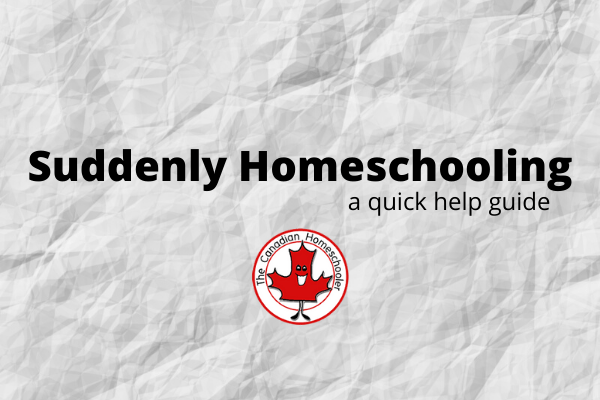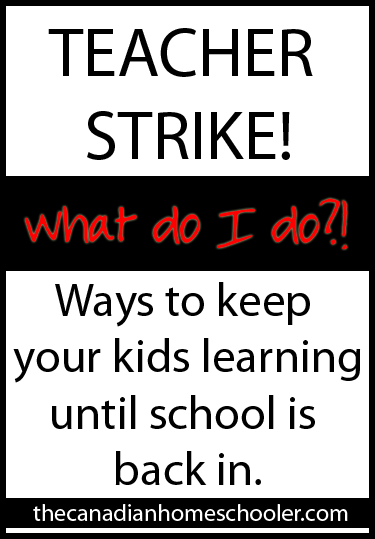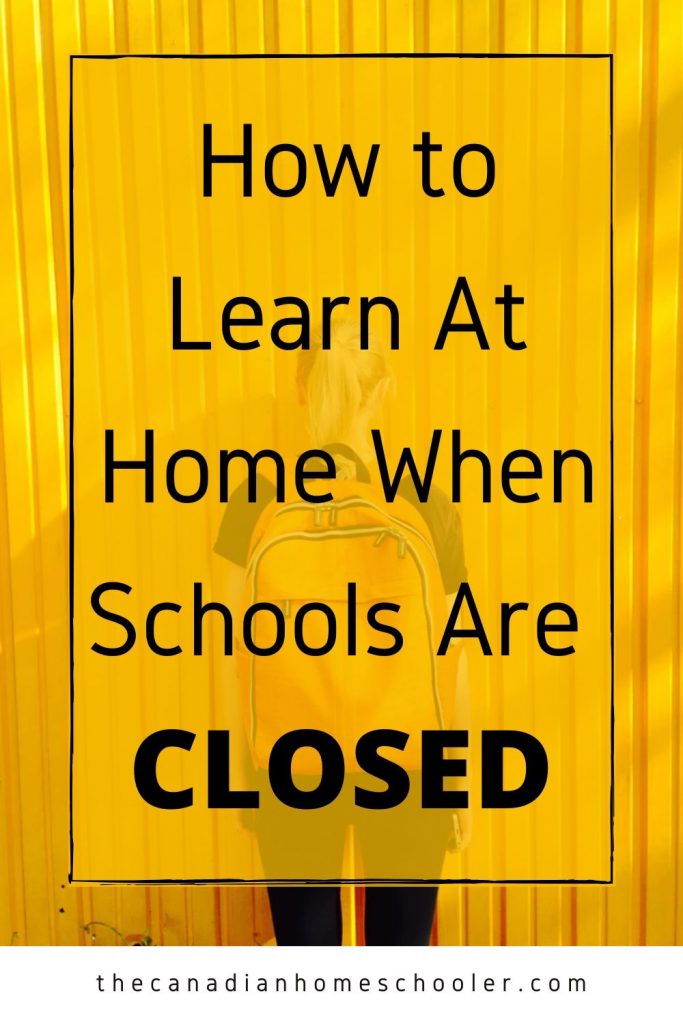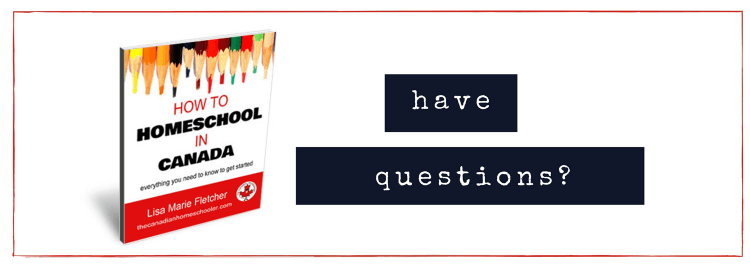If you are a parent whose children typically go to a school, but the schools are closed for whatever reason, you might be wondering how to learn at home.
First, relax. Don’t panic. It will be ok. A few days, weeks, months, or even a year without formal education will not set your child up for failure for the rest of their life. Kids learn an incredible amount of information just through everyday interactions and experiences.
Next, consider how this experience is making your children feel. Kids who are feeling stressed or anxious about their situation cannot learn well. Take some time to talk about it together. Help them understand what is happening and give them both space and time to relax. There is no need to rush into doing a school-like day with your children. It’s more important to nurture a relationship with your child than to cram education into them because it seems expected.

Now, to decide what you will do.
Do you want to just use this an extended vacation? Go for it!
Enjoy the time together. Have adventures, go exploring, (virtually) visit museums and day trips, play board games, read together, build with LEGO, watch great movies, exercise with sites like GoNoodle, or even just relax together. This is a uniquely special time to create memories that you wouldn’t have had otherwise. Use this opportunity.
Are you wanting to keep learning fresh in your children’s mind, or keep doing schoolwork?
First, see if your child has any assignments or homework to complete during this time. Sometimes, schools offer online tools to share projects or assignments, so check with your child’s teacher, if possible.
Next, if there is nothing official, here are some ideas of ways to learn at home that are free or cheap.
1. Do a Unit Study. Pick a topic your child loves and dive in. Go to the library and stock up on books. Check YouTube or Netflix for documentaries or related TV shows. Check Pinterest for craft ideas. Use Google and search for “(topic idea) lapbook” and you can often find some great resources to build on for learning. This can work for just about anything and for any grade student:
- science topics like space or animals
- literature based like Anne of Green Gables, Laura Ingalls, or King Arthur
- history topics like World Wars, Ancient Egypt, etc.
- cultural studies exploring countries around the world
- technological studies like computer programming or even Minecraft!
HERE’S HOW TO CREATE YOUR OWN UNIT STUDY (& A FREE PLANNER!)
2. Use Websites & Apps:
- Khan Academy: Math & More. This is a free website that aims to bring an open platform of education to anyone who wants it. It’s a terrific way to work on math – especially in the older grades where things can be hard for parents to teach. The site has instructional videos that are clear to understand with lots of visual examples, followed by learning questions and review. Kids earn points and awards, which they love, through a mastery system – they have to show they understand concepts before they get mastery in any skill. It’s completely possible for kids to work at their own speed independently.
- ProdigyGame: This is a free Math RPG game where kids use math to cast spells against enemies. It’s a lot of fun and a great way for kids to learn though games.
- Daily Grammar: Your kids can do a free grammar lesson every day. Click on the topic you want to work on or start from “Verb” for Lesson 1.
- CrashCourseKids: This youtube channel is the kid edition of the popular Crash Course series and focuses mostly on sciences through engaging and fun videos. Their high school and up videos are at TheCrashCourse and cover all kinds of subjects such as history, science, literature, film, and more.
- Mango Languages: French. Many libraries across the country have teamed up with Mango Languages to offer free language course so that you can learn at home. You aren’t limited to French either. Check to see if your library offers this program. OR Duolingo – a free app that you can download to learn a ton of different languages.
- History Through Living Books: Use fictional literature to study more about our Canadian history. This makes learning history fun, personal, and more relevant to kids.
EDUCATION COMPANIES OFFERING FREE SUBSCRIPTIONS DURING SCHOOL CLOSINGS FOR COVID-19
3. Learn in Unusual Ways:
- Videos/Movies. There are so many awesome opportunities for learning within movies and videos. Check out the TED-Ed website for educational videos on a huge selection of subjects. Teach With Movies helps you watch entertainment movies and turn them into educational conversations and projects. Even watching channels like National Geographic,
- Play games. Whether it’s a board game or a video game, kids can learn so much. Try Scrabble or Bananagrams for language and spelling. Monopoly and Poker for math. Sid Meier’s Civilization for history and strategy. Minecraft for coding (or you can check out some lesson plans and challenges at Minecraft Education Edition for more.)
- Life IS learning, so check out some of these life learning ideas.
- Read. Read out loud together. Use AudioBooks. Have a reading challenge.
- Take some virtual field trips. Google has thousands of museums you can walk through on your computer. Here are some other famous museums. You can visit Nunavut, or the Parliament Buildings, or even a farm.

HAVE A PRESCHOOLER? HERE’S HOW TO LEARN AT HOME WITH A LITTLE ONE.
4. Workbooks / Worksheets:
If you feel the need to add more “traditional” style while you learn at home (which you don’t usually need to do, especially for short-term school breaks), here are a few cheap options.
- The Complete Canadian Curriculum series of books for grades 1 through 8 covers math, English, science, and social studies in a single book per grade. Aligned with the curriculum plans for each grade, these are terrific books for when you want to touch base with learning for a while. Although I wouldn’t consider your child finished their entire year of school when the book is complete, it’s a good resource to use either as a base, refresher, or an intro to learning. This company also carries a SmartSeries – individual books for math, science, English, and French. These are more in-depth than the “complete” book is and can provide a good solution for review and longer term learning as needed.
- Pinterest is an amazing search engine. If you look for worksheets on just about any topic, you will find something – I’m sure. So many teachers, homeschoolers, and companies have made terrific printable pages. All you have to do is find something that matches what you want to learn, print it out, and get started.

What if the schools close for longer or you need a more permanent solution to learn at home?
If you are wanting to implement a learn-at-home plan because schools are closed for a longer period of time, visit my learn-at-home plans page which offer grade by grade resources far each subject.
If you need to consider homeschooling as a longer term option, I’d recommend you start in the Getting Started section of this website. There is an ebook that goes through the how-to steps and links to relevant blog posts about planning and choosing curriculum and more.
WANT TO KNOW MORE ABOUT HOW TO HOMESCHOOL IN CANADA?
Hopefully, these ideas will help you during this period of no school. Most important thing to remember is that learning should be fun and that you don’t need to panic. Try just to enjoy this time with your kids.
- How to Keep a Toddler Busy While Homeschooling - March 21, 2024
- 25+ Things Your Kids Learn From Video Games - March 20, 2024
- 10 Words For New Homeschoolers - March 20, 2024





This is awesome, freeing, encouraging, and still resourceful!!! Thank you so much for taking the panic out and being a source of common sense and help while so many of us are trying to teach from home for the first time.
After a lot of internet research, and planning to spend a good amount of money on kits and programs, I’m so thankful I came across your page first.
Thank you again ❤️
I’m so glad that it’s helpful. <3
I find your website very helpful. God bless you for being a blessing in these challenging times
Hi there,
I hope all is well! Reaching out today from Sprig Learning. We just announced yesterday that our early learning program for children aged 3-6 is now free for all parents across Canada (no catch, no credit cards) during school closures. Lots of fun educational activities to keep children engaged and challenged at home!
In the case that you are working on more content to present resources available to parents/or if you would be open to adding us to the list in your post about learning at home while schools are closed – we’d be so grateful for any help to spread the word. Let me know if you need anything else from us or if you have any questions at all!
Here’s a link to the press release: spriglearning.com/canadian-edtech-company-launches-early-learning-platform-for-parents-during-school-closures/
And a link to the Sprig Home page to get a free account: spriglearning.com/sprig-home/
Thanks in advance,
Andrew Fraser
PR & Communications Specialist, Sprig Learning